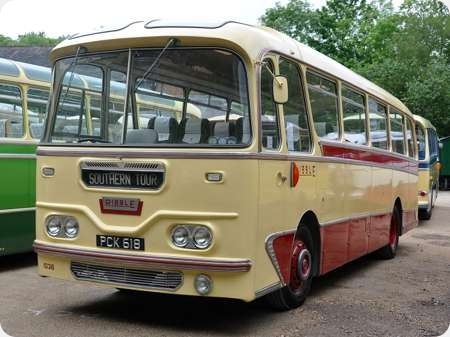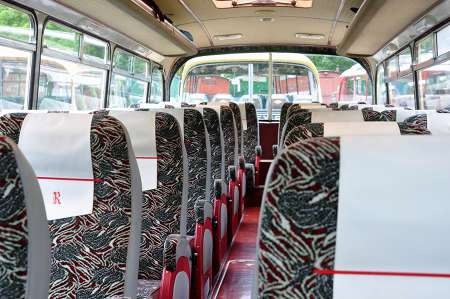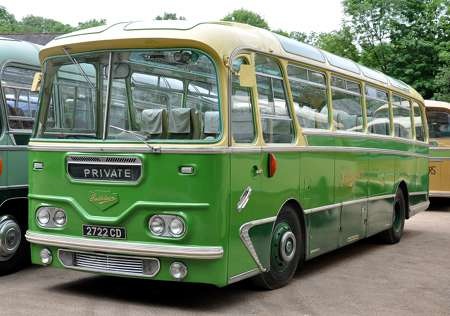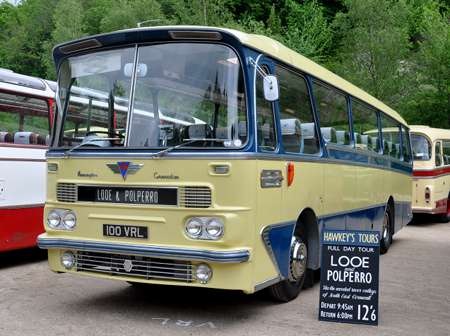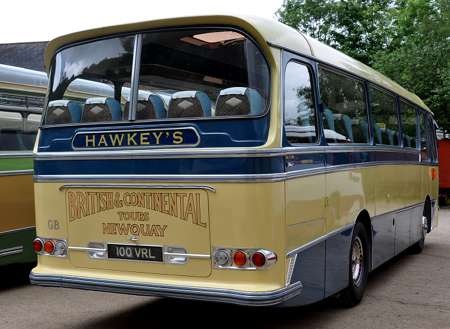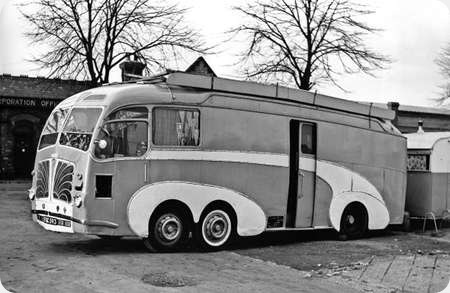
City Coach Company (Brentwood)
1938
Leyland TEP1 Gnu
Duple C40C
This vehicle was the third and last TEP1 chassis and was delivered new to the City Coach Co in August
1938 as fleet number G1. City’s later Gnus were of chassis type TEC2. When new the Duple bodywork was in
C40C lay-out.
The vehicle was sold to a dealer in May 1948 and then re-sold to E Wright of
Southend-on-Sea (trading as Grey Luxury Coaches) in the following month, becoming Wright’s fleet number
8. Wright withdrew it in June 1951 and it next appeared with Taylor of Caterham in May 1952 as fleet
number 16.
Taylor traded it in to the Arlington Motor Co dealership in November 1954 and by June
1956 it was reported to be with an "unidentified showman". Does anybody know when it was last
licensed?
I bought the original 10×8 print (which now hangs in my flat!) from a second-hand
stall and have no idea who the original photographer was nor where the picture was taken. Can anybody
identify the location?
Photograph and Copy contributed by Neville Mercer
27/03/16 - 09:58
Ooh! 25 years or so before the Bedford VAL . . .
Pete Davies
28/03/16 - 15:07
Four-wheel steering PSV’s were a very rare breed. The Leyland Gnu (supposed to
have a silent G but that all stopped with Flanders & Swann’s song) was not only a rare beast with
its four-wheel steering, but also with its set back front axle, like the Maudslay SF40/Magnum, but
not looking so sleek.
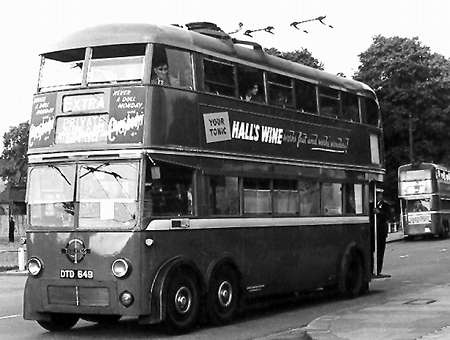
Another example was London Transport’s 1939 chassisless all-Leyland Class X7
four-wheel steering trolleybus 1671 (DTD 649) which was unique in the fleet and scrapped in 1955. It
was conceived, and was successful at, reducing tyre-scrub problems on the conventional six-wheeled
trolleys and considered to have light steering, but was not repeated.
Chris Hebbron
29/03/16 - 05:54
There were only ever three of the Gnu TEP1 built, the other two being 40 seat
front-entrance saloons bodied by and operating for Walter Alexander & Sons Ltd.
Unlike the
later TEC2 which was a PSV conversion of the Steer TEC1 lorry, not only was there a substantial
front overhang, but also the radiator (of Tiger pattern) was off-set to the nearside to allow the
8.6 litre engine to be mounted further forward to improve passenger access.
Here’s an
Alexander official picture of the first one: www.flickr.com/photos/
The steering was not (unlike the VAL)
power assisted.
Stephen Allcroft
29/03/16 - 05:54
Interesting that the trolleybus has a Lancashire DTD registration. Was it
originally a Leyland demonstrator?
Philip Halstead
29/03/16 - 09:08
Not exactly, Philip. It was a one-off experiment with Leyland chassis and body
to mimic LPTB’s trolleybus ‘house style’; a sort of demonstrator, but with LPTB very much in mind!
This would not have been hard, as Leyland had built some London chassisless trolleybuses, to order,
a year or two before. Electrical equipment was by Metrovick. It was run in London for about six
months, then bought by LPTB, perhaps because, despite the war having started, trolleybus expansion
was still running at pre-war levels in London and, with prescience, they wanted all they could
get!
Chris Hebbron
29/03/16 - 10:54
Following on from Stephen A’s post, here are some photos of Gnu models painted
in City and Alexander colours; all four sides. The page is slow to load, then go 1/3rd down the
page.
You can double-click to magnify. http://tinyurl.com/zqgd4fh
Chris Hebbron
29/03/16 - 11:50
The City Coach Co. like Birch Bros., was partly able to keep out of London
Transport’s clutches, because of its long-distance service to Southend. And the pair of them used
vehicles which maximised customer payload. Birch used double deckers a lot, including Leyland
Titanics and City used single-deck six-wheelers. Here is an eclectic selection of them, notably the
Leyland PS2/11 with trailing front axle! http://tinyurl.com/ztpnx68
Chris Hebbron
29/03/16 - 14:00
Some of those views mentioned by Chris Hebbron (29/03/16 - 11.50) have what
look to be ‘Foden-ish’ front panels. Or are my eyes playing tricks again?
Pete Davies
30/03/16 - 05:42
Yes Pete, they are "Foden-ish" in their looks, but that’s the limit
of it. There’s no Foden element in any of these Leylands. I suppose that a Foden designer might have
seen them and worked on a similar design (or did someone working with pre-war Leyland transfer to
Foden later?) But these are all fascinating buses and coaches. The images of the models in Chris H’s
link is also interesting. It was worth comparing the dimensions of the NGT SE6 with those of the
Leyland Gnu - two different pre-war approaches before Midland Red led the way with the under-floor
engined S6 saloon in 1946 for the rest of the world to follow.
Michael Hampton



